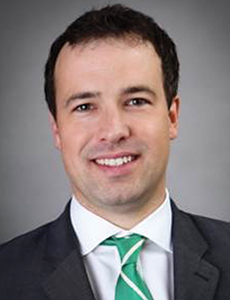Insurance Industry
This Risk Strategy Helped Oil Drillers Survive. Can Other Industries Do the Same?

In an industry such as oil and gas, a lot can happen over the course of a year. A global decline or spike in oil prices can impact the entire industry and change the risk profiles of operators within a week as they scale up or down.
In tumultuous times, insurers and brokers can also look to creative strategies to ride out the market fluctuations. The fall in oil prices a few years ago inspired one broker to consider a unique strategy that involved rewriting insurance contracts in the middle of their terms.
While the strategy came with its own set of risks for the involved parties, it proved to be a fair middle ground that offered cost reduction for the client, maintained the relationship for the broker and preserved market share for the insurer.
Changing Policies for a Changing Economic Environment
The fall in global crude oil prices from $110 per barrel to near $30 per barrel between May 2014 and January 2016 sent shockwaves across the entire industry.
Lisa Harris, senior vice president, JLT Specialty Insurance Services, Inc., who represents many offshore drilling contractors, recalled that it was a difficult period for many of her clients as operators scaled back operations and put a big pinch on drilling contractors in the process.
Balancing the need to cut expenses with the desire to retain access to drill boats for when the market rebounded, many energy operators resorted to a “blend and extend” strategy.
In many cases, they would cut rates for contractors by up to 30 percent and in turn extend the terms of a deal for up to two or three years. It enabled drillers to keep earning some revenues while also enabling the operator to retain a driller for when the market rebounded.
“While it wasn’t ideal for either party, it was a win-win, because it kept the drilling contractor and their crews working,” Harris said. “It’s something they’ve used in the industry during downturns.”
JLT evaluated several strategies to help their clients ride out and navigate the “pressurized economic environment,” said William Helander, executive vice president, JLT Specialty Insurance Services, Inc.
One of those options was to use the industry’s own blend and extend strategy in the insurance market. The idea was that as drillers scaled down operations and worked less, their risk exposures would also decline. Insurers could renegotiate contracts to offer cost relief while also maintaining the client relationship. JLT brought the idea to their insurers and found they were generally receptive.
In most cases the new mid-term contracts priced in factors that had typically decreased, such as payroll and values of other assets impacted by the various falling commodity price market.
“We would look and try to blend the lower exposures and, in turn, extended the program at a lower rate,” Helander said.
“It would take the risk out of the market for a longer period of time and [the driller] would get a lower cost basis right away.”
Balancing Risk for the Client and the Insured
Certainly, it’s not normal for insurers to rewrite a contract in the middle of a 12-month term, and doing so can create risk for all parties involved.
“The inherent tension is that you’re asking someone to rip up that contract and write it in a way that’s more favorable to one party. Anytime you’re doing that, you’ve got to balance the market tensions of two parties looking out for themselves individually and doing that in a way that makes the most sense,” Helander said.
JLT mostly used the strategy with its London market relationships and, in some cases, domestically. Insurers considered not only the market but also things such as the age and technology of their fleets and the backlog of work.
Good underwriting partners were key to making the strategy work, Helander said. Insurers essentially had to be willing to give up some premiums to secure and retain their market share in the future.
“There has to be a partner that’s willing to give a little here to get a little later. That flexibility and level of competition is really important on the market side,” Helander said.
A Strategy for Other Insurance Markets
As the energy market stabilized and rebounded in 2017, premiums rose back to their original levels and JLT phased out the use of the blend and extend strategy.
But the success of the strategy means it could be on the table again in the future should energy markets head back into a cyclical downturn.
“I believe that where there is a need for that immediate relief, absolutely, it is all about market share. In an environment where prices are falling for insurance companies, guaranteeing something immediately is something that would be applicable,” Harris said.
In the energy sector, some utilities offer such mid-term review contracts to clients that enable them to take advantage of lower costs in a falling market by extending the original contract over a longer period.
For example, should rates fall, a supplier may offer to blend current rates with contract rates should the client extend the contract for an additional year or two.
Helander believes the strategy could ultimately work in other areas of the insurance industry such as in health care and tech. The insurer also gets the benefit in what’s considered a competitive and falling market to keep the piece of business out of the marketplace for a longer period. They would have a reserve of the policy terms for a year’s period, which means, in theory, they could not only give a little on the front end but would also extend it for a longer period.
“It’s one of those strategies that when you’re walking into a deteriorating environment or an improving one, it can be used up and down with success, provided those dynamics around market interest and client interest all align well,” Helander said. &












